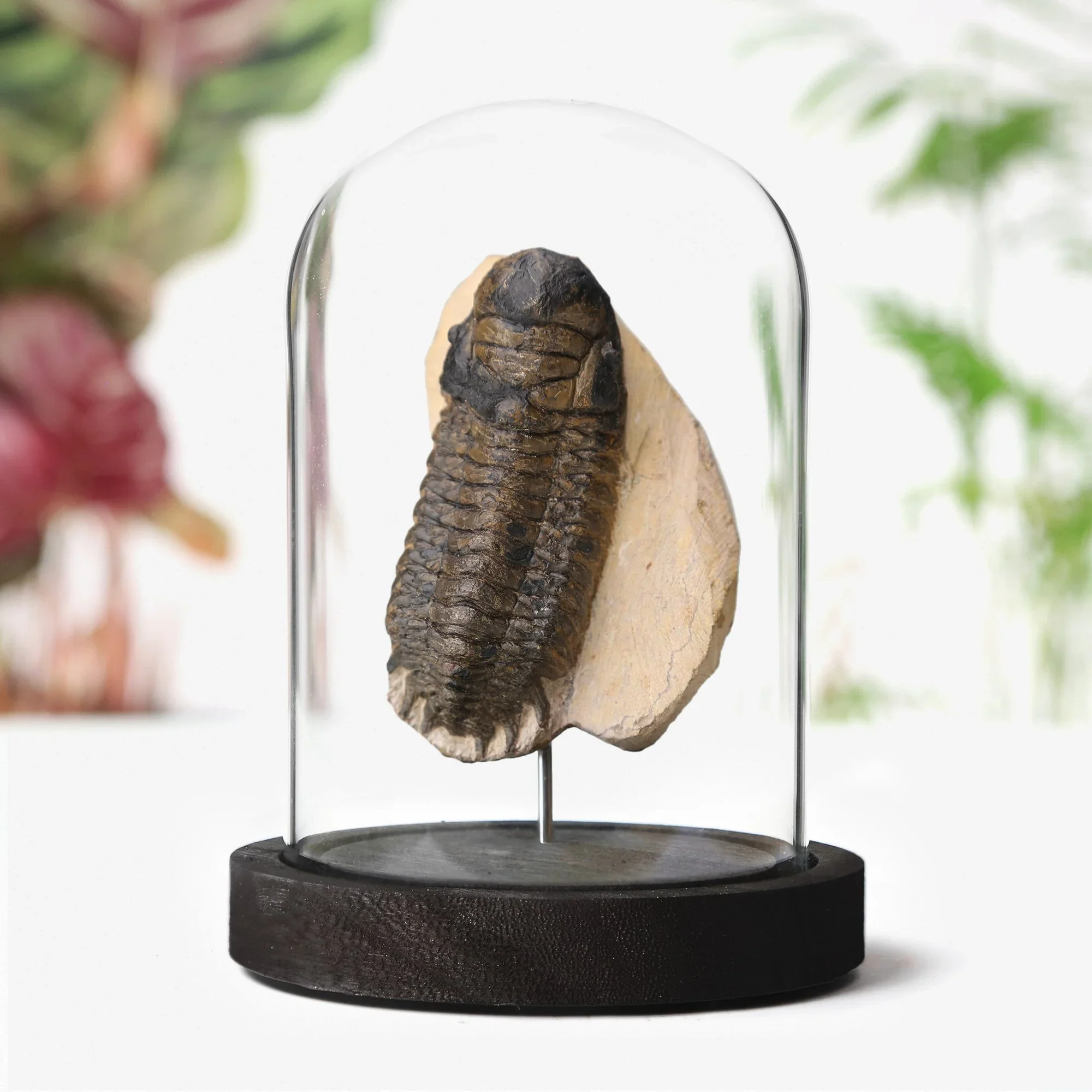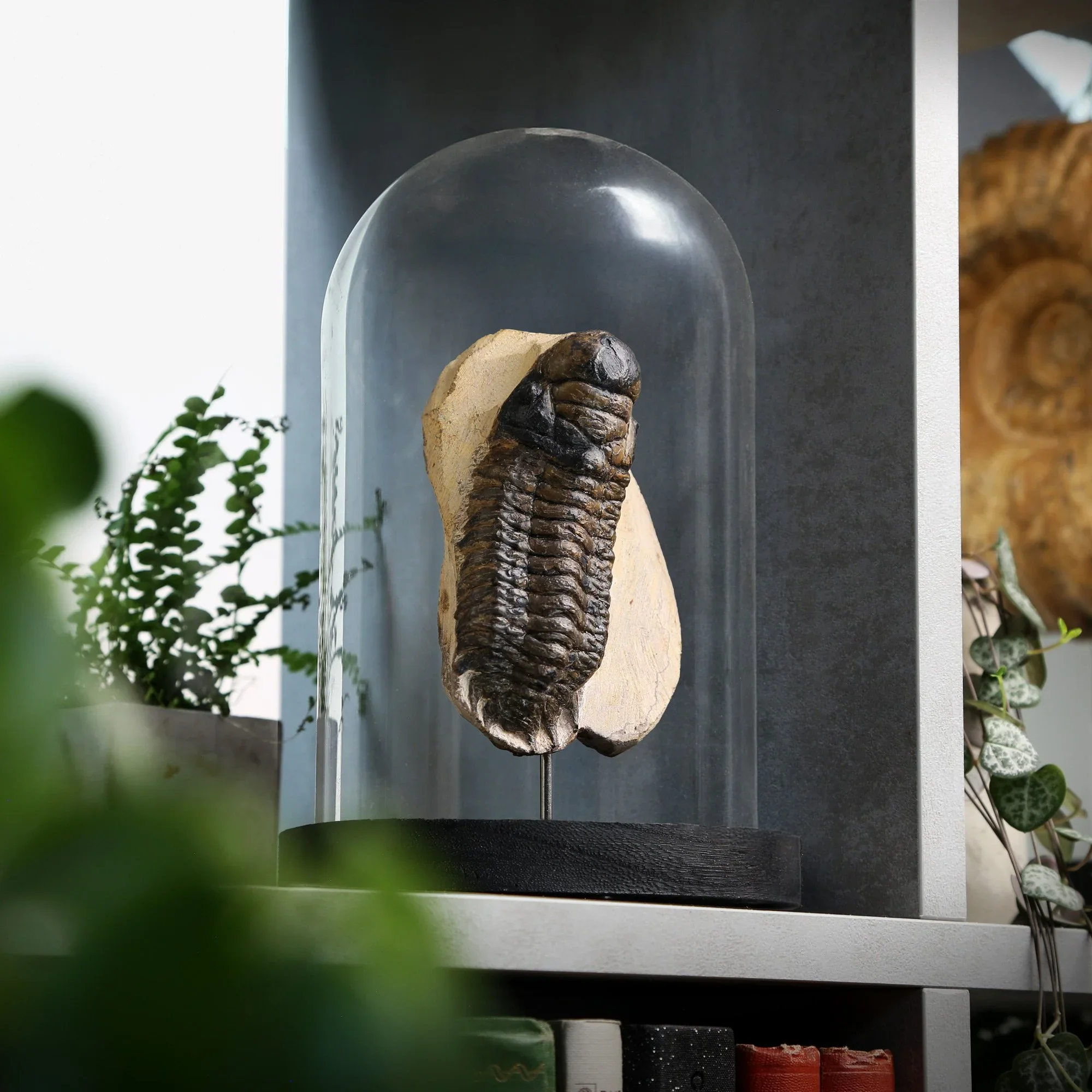 Image 1 of 8
Image 1 of 8

 Image 2 of 8
Image 2 of 8

 Image 3 of 8
Image 3 of 8

 Image 4 of 8
Image 4 of 8

 Image 5 of 8
Image 5 of 8

 Image 6 of 8
Image 6 of 8

 Image 7 of 8
Image 7 of 8

 Image 8 of 8
Image 8 of 8









Lytoceras Ammonite
This fossilised ammonite belongs to the genus Lytoceras and dates to the Jurassic or Early Cretaceous period, around 150 to 100 million years ago. Known for its smooth, tightly coiled shell and intricate suture patterns, Lytoceras was a free-swimming cephalopod related to modern squid.
The specimen displays fine mineral preservation, with complex sutures visible along the shell’s surface, an adaptation thought to strengthen the shell at depth. Recovered from marine deposits in Europe or North Africa, it has been carefully prepared to highlight its natural form and detail.
Recovered from marine deposits in Europe or North Africa, this specimen has been expertly prepared to expose its natural form and fine detail.
Base: Solid oak wood
Mount: Stainless Steel
Dome: Handblown 2mm tempered glass
Dimensions: 100x150mm
The picture shown is an example of the quality that you can expect to receive. Please be aware that, as these are natural products, they are subject to some variation.
This fossilised ammonite belongs to the genus Lytoceras and dates to the Jurassic or Early Cretaceous period, around 150 to 100 million years ago. Known for its smooth, tightly coiled shell and intricate suture patterns, Lytoceras was a free-swimming cephalopod related to modern squid.
The specimen displays fine mineral preservation, with complex sutures visible along the shell’s surface, an adaptation thought to strengthen the shell at depth. Recovered from marine deposits in Europe or North Africa, it has been carefully prepared to highlight its natural form and detail.
Recovered from marine deposits in Europe or North Africa, this specimen has been expertly prepared to expose its natural form and fine detail.
Base: Solid oak wood
Mount: Stainless Steel
Dome: Handblown 2mm tempered glass
Dimensions: 100x150mm
The picture shown is an example of the quality that you can expect to receive. Please be aware that, as these are natural products, they are subject to some variation.












